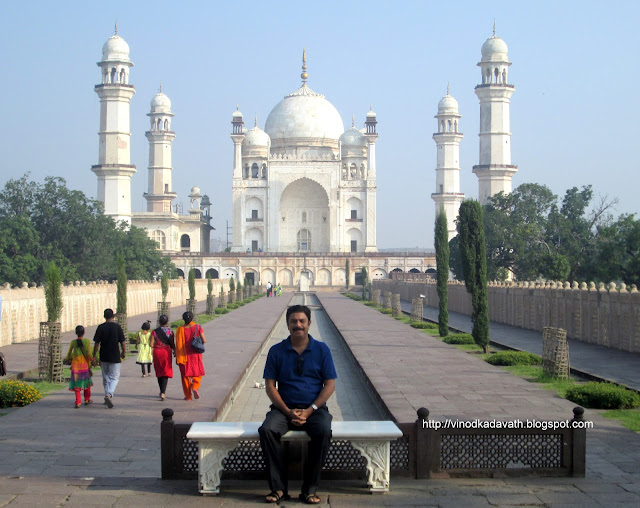We started off our journey from Mumbai on 28th November at around 11.00 pm towards Gunjavne (Base Village of Rajgad). At around 5 am we reached the base village. We had breakfast in the early morning and started our trek at around 6.30 am.
There are 3 ways to trek to Rajgad. One is from Gunjavane village which leads to Padmavati machee. This trek route is mainly known as Chor Darwaza (Secret Doorway). Second route is also from Gunjavane village but it leads to Suvela Machee. Third route is via Pali base village which leads to Pali Darwaza. Our route was through Chor Darwaza.
The sun was rising slowly and steadily. The sky blazes above hills with a mix of orange and red colour and staining the horizon. All of us were busy capturing this beautiful scenary.

After a few hours of trek , we entered the lush green part and now the fort was right there in front of us, full covered in green. The fort can be divided into four different parts. There are three sub-plateaus (Machee) namely Padmavati Machee, Suvela Machee and Sanjevani Machee, and at the center- Ballekilla (meaning "small fort").
Moving ahead , the trail starts getting steeper and steeper and then it is a vertical climb. There are railings on the steep slopes to help the trekkers reach the chor darwaza.
On reaching the summit, we get a beautiful view of the surroundings covered with greenery.
After crossing the main entrance to the fort, we reached Padmavati machi. Near the entrance of the fort, we get to see a beautifully constructed lake right in front- Padmavati Lake.
The walls of the lake are intact even today. An arch has been constructed from the continuation of the same wall to mark an entry to the lake.
After a few steps, we were near to Padmavati temple and had a wonderful breakfast of poha and tea in front of a small house near Padmavati Temple. Padmavati temple is in a fairly good state today due to renovation done recently.
The next check point was at the top of Balekilla – the top most point of the fort. Balekilla is straight up in front of Padmavati machi. The track splits into three parts, the straight one going up to Balekilla, the left one going towards Suvela machi and the right going to Sanjeevani machi.

Due to time constraints, we skipped Suvela Machi. Facing east, Suvela Machi has lots of secret routes, doorways , nedha (Mountain hole). We continued our walk towards Balekilla.
The route to Balekilla was again very steep and for each of us having big bags at our backs, it seemed a bit tiring. The route to the top is somewhat slippery too but with the support of railings put along, the task was comparatively easier.
After climbing the difficult section, we reached the Maha Darwaja of Balekilla . It has a unique triangular structure and a single point access.
The fort in Rajgad stands as a silent reminder of Maharashtra's glorious past though the sound of trumpets or the clang of clashing swords and shields are heard no more at this historic monument.
This highest part of the fort has remains of palaces, water lakes and water towers. One can view the whole fort and the vast surrounding expanse.
Below is the excellent look of Fort Torna from Balekilla of Rajgad. The snap also shows the route to Torna from Rajgad.
It offers an enchanting view of Padmavati, Sanjeevani and Suvela machi.
Below is the view of Padmavati machi from Balekilla.
There are a couple of temples, and a small crescent shaped lake called Chandratale on the Balekilla. The shape of this lake is similar to that of the moon decrescent. That is why this is called 'Chandratale' (The moon lake).
These are the ruins of the palace of Shivaji Maharaj on Balekilla.
Below is the view of Sanjeevani machi from the top of Balekilla. The fort continues to charm and mesmerize generations.
After entering Balekilla from the Mahadarvaja, you need to climb a few steps to go to Bramheshar Temple.
As we move from Padmavati machi keeping the Balekilla to our left, we approach Sanjivani machi. This machi is enjoined with Budhala machi on Torna by a range of hills between the two huge forts.
Sanjivani machi is a huge, beautiful and royally constructed machi, faces west and has 3 layered fortifications making it extremely difficult to conquer. Each layer has a depth of 20 feet and just 2 feet wide which looks like a scary narrow well. This type of construction was to aide guerilla warfare.
The Sanjeevani Machi of the fort has dual fortification. The dual fortification has made the fort more robust.
After exploring the fort and having lunch, we started our descend by about 2 pm.
Soon we reached the base village. After having evening refreshment at the base village, we started our return journey and reached Mumbai at around 10 pm .
































































